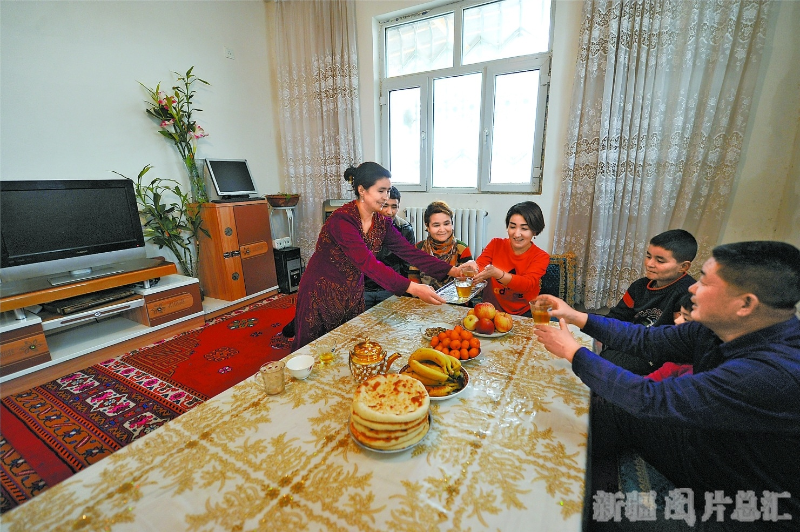Data and highlights from the Xinjiang government work report
Members of the 13th Xinjiang Uygur Autonomous Region People's Congress attended a meeting at Xinjiang People's Hall in the region's capital, Urumqi, on Feb 1. Shohrat Zakir, chairman of the region, delivered his government work report during the session. Let’s take a look at some of the key data and highlights from the report.
Steady income growth
The per capita disposable income of rural and urban residents reached 14,056 yuan ($2,169) and 34,838 yuan last year, with an average annual growth rate of 8.3 percent and 5.3 percent respectively over the past five years.
Improved housing
Over the past five years, about 1.17 million rural households have moved to resettlement communities and 1.29 million sets of subsidized houses were built for urban residents.
In addition to the 1.12 million homes that were built as part of shanty town renovations, a total of about 10 million people benefited from housing improvement projects.

File photo taken on Jan 31, 2019 shows a Hetian villager (L) entertaining guests in her new house. [Photo/Zhou Peng]
Full coverage of medical centers in rural areas
All the towns and villages in Xinjiang now have standard medical centers, which can effectively help prevent tuberculosis and other major infectious and endemic diseases in rural areas in southern Xinjiang.
It is also the first provincial region to offer "hospitalization before payment" services that allow rural people to receive inpatient care in local public hospitals before fee settlement.
More airports to be built
Xinjiang constructed four feeder airports from 2016 to 2020 and the total number of civil airports in the region reached 22 last year. The region also plans to build 15 new airports by 2025, bringing its total number of airports to 37.
The planned new airports help the region - which was an essential part of the ancient Silk Road - to have a "Silk Road in the air", Shohrat said.

A plane lands on Wanfang Airport in Yutian on Dec 26, 2020. [Photo/Zhou Peng]
More input targets livelihoods
In the past five years, over 70 percent of the region’s fiscal expenditure has been used to improve locals' livelihoods, including in employment, education, public health, social security, housing, and clean energy.
In 2021, 1,714 urban shanty communities will be renovated and this will benefit 231,500 households. The supporting facilities and civil works will be upgraded, such as the installation of elevators in residential buildings. The region will also improve elder and child care, as well as medical services.

File photo shows senior residents taking a walk in their new community on May 6, 2020. [Photo/Han Liang]
461,100 new urban jobs added
The region added 461,100 new urban jobs in 2020. Xinjiang took a variety of measures to ensure stable employment, including support for entrepreneurship and helping unemployed families find jobs.
Last year, Xinjiang granted about 2.53 billion yuan of secured loans for entrepreneurship, allowing 73,900 people to start businesses and 134,300 people to find jobs.
 Attractions
Attractions Dining
Dining Culture
Culture